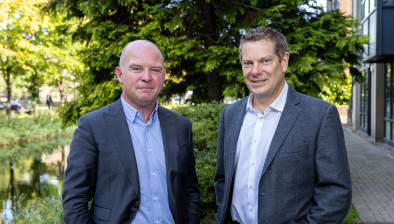Analysis: Breathing new life into old spaces – innovative repurposing of commercial properties in Ireland

Aoife O'Dea
As the commercial real estate landscape evolves, the repurposing of older properties is now emerging as a crucial strategy for developers looking to maximise value and adapt to changing market demands, write Aoife O’Dea and Eoghan Davis.
According to recent reporting by Cushman & Wakefield’s Rethinking European Offices 2030, over 170 million square metres of office space in 16 major European cities are at risk of obsolescence.
In other words, these spaces are fast becoming outdated and/or unsuitable for their intended use due to changing work patterns, technological advancements, evolving tenant expectations and regulatory changes.
The report and the figures referred to highlight the growing need to creatively repurpose and revitalise our ageing commercial premises in Dublin and beyond.
The need for repurposing commercial properties
The growing need to repurpose commercial properties is being driven by several factors.
The Cushman & Wakefield report highlights that a significant portion of office space in major European cities is at risk of becoming obsolete. Dublin performs better than many other cities included in the report such as Amsterdam, Barcelona, London, Madrid, Milan, Paris and Stockholm, where almost 80 per cent of office space is at risk by 2030.
Ireland’s relatively strong performance in this regard can largely be attributed to the mass modernisation of commercial real estate which has taken place over the last two decades. However, the report states that an astounding 64 per cent of Dublin’s office stock will be at risk by the end of the decade.
The repurposing and reimagining of older commercial properties offers a sustainable solution to this challenge. By adapting existing properties to new uses, developers can help to minimise the waste and environmental impact associated with demolition and new construction.
This approach aligns with the principles of adaptive reuse, promoting sustainability by preserving the embodied energy in existing structures. Embodied energy refers to the total energy required to extract, process, manufacture, transport and assemble the materials used in a building.
Opportunities in Dublin
Dublin presents numerous opportunities for repurposing ageing commercial properties.
The city’s secondary office stock, which is at risk of obsolescence, provides a solid foundation for innovative projects. It is now open to developers to capitalise on the unique architectural features and historical value of older properties and transform them into modern, functional spaces that meet the demands of the current Irish real estate market.
A notable case study of innovative repurposing can be found in the transformation of Telephone House on Marlborough Street. Constructed in the 1970s as an office block, this building is currently undergoing conversion into a 296-bed aparthotel.
This project demonstrates how outdated properties can be reimagined to meet contemporary needs, providing both functional and aesthetic upgrades. This not only addresses the issue of obsolescence but also caters to the growing demand for flexible accommodation options in the city.
Challenges and considerations
These projects do not come without their challenges — the same as any new development. While there are tangible benefits associated with repurposing outdated commercial properties, the pros and cons associated with such projects should be assessed on a case-by-case basis.
To ensure compliance with modern building regulations, developers must conduct thorough feasibility studies to assess the structural integrity of buildings targeted for repurposing. Additionally, repurposing can involve significant and complex restoration work which will attempt to preserve historical elements while simultaneously upgrading the building’s functionality and energy efficiency.
Repurposing of commercial property in Ireland will often entail the navigation of several legal issues including:
-
Zoning and land use regulations: Zoning policies dictate how properties in specific areas can be used. When repurposing an older office building, it is crucial to verify that the intended new use (e.g., residential, retail and mixed-use) is permitted under the existing land-use zoning category.
-
Planning legislation and building regulations: Repurposing works will need to comply with the Planning and Development Act 2024. Permission for a change of use will be required when the intended new use of the property differs significantly from its current use. In addition to planning considerations, any repurposing works will need to comply with the various Building Regulations, including the Building Control Acts 1990-2014, the Building Regulations 1997-2019, the Building Control Regulations 1997-2015 and the Building Control (Amendment) Regulations 2018 and 2024.
-
Historical preservation: If the building is listed or located in a conservation area, there may be additional restrictions and requirements for maintaining its historical character.
-
Environmental regulations: Considerations will need to be had in respect hazardous materials, contamination or in virtually all cases the need for significant energy efficiency improvements.
-
Lease agreements and tenant rights: If there are existing tenants in the building, a full review of existing lease agreements will be required to consider tenants’ rights. This will include negotiating with current tenants, potentially terminating leases, and addressing any compensation requirements.
-
Development finance: Though repurposing can often be more cost-effective than new construction, it still requires substantial investment. Repurposing projects often require specialised financing due to the unique risks and challenges involved. Traditional lenders may have specific criteria for funding adaptive reuse projects and it may be beneficial to seek financiers experienced in this area. Lenders typically require a thorough due diligence process, including property appraisals, environmental assessments and feasibility studies. Providing comprehensive and accurate information can improve the chances of securing financing.
-
Legal documentation and construction contracts: It is important to have all necessary and appropriate legal documents and contracts in place with the contractor and professional team members. Construction contracts should include detailed plans and specifications for the works and clearly outline the obligations of the contracting parties in relation to matters such as payment, insurances, defects and the provision of collateral warranties.
Conclusion
For developers and investors interested in repurposing commercial properties in Irish cities like Dublin, Cork, Galway or Limerick, the key lies in identifying properties with potential for transformation where modern design and technology can rejuvenate spaces to meet current market demands.
Repurposing older commercial properties not only addresses the issue of obsolescence but also contributes to sustainable urban development by reducing the need for new construction.
However, this new approach entails unique financial, engineering and legal challenges which investors and developers must carefully consider.
![]()
- Aoife O’Dea is a senior associate and Eoghan Davis is a trainee solicitor in the real estate team at Ogier in Dublin.









